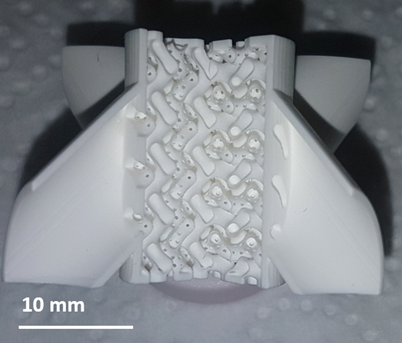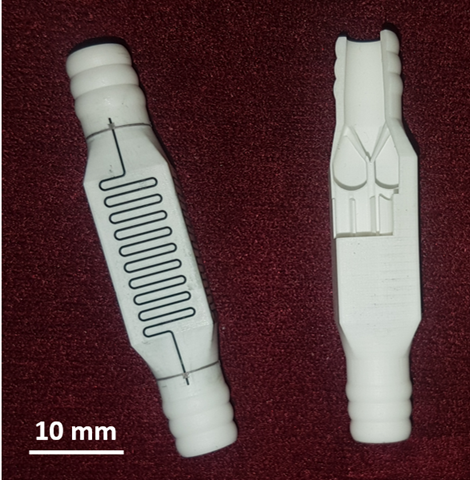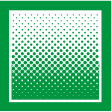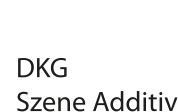
Vat Photo Polymerization
Vat Photo Polymerization
Autor
- Dr.-Ing. Tassilo Moritz
- Winterbergstraße 28, 01277 Dresden, Germany
Telefon +49 351 2553-7747
Fax +49 351 2554-197 - E-Mailtassilo.moritz@ikts.fraunhofer.de
Vat Photo Polymerization (CerAM VPP), also known as Lithography-based Ceramic Manufacturing (LCM) uses a photo curable monomeric suspension of the ceramic powder which is exposed to a defined wavelength for curing a layer of the desired ceramic component. Thus, the building process takes place layer-by-layer with a layer thickness of 5 to 100 µm with a lateral resolution of min. 40 µm which increases the productivity of the process in comparison to conventional stereolithography using dot-wise exposure by a laser beam. The component is built up hanging top down at the building platform. After removal of residual suspension the component is debindered and sintered to final density which is approx. 99.4 % of theoretical density for alumina and > 99.0 % for zirconia. Beside the before mentioned ceramics also nitride ceramics, mixed oxides, hydroxy apatite, traditional porcelain, and glass components can be made by this method. The complexity of ceramic components realizable with this technology are nearly unlimited, so that many new applications can be addressed.

Mixing component for three fluids and flow heater with complex inner structure (Source: Fraunhofer IKTS)

Heating structure applied by aerosol jetting (Source: Fraunhofer IKTS)
-
 Webmeeting / Webkonferenz | May 02 - May 2, 2022
Webmeeting / Webkonferenz | May 02 - May 2, 2022
AKK-Frühjahrstagung 2022 -
 Ausschuss / Arbeitskreis | Jun 14
Ausschuss / Arbeitskreis | Jun 14
2. Mitgliederversammlung des Anwenderkreises Keramische Additive Fertigung in der DKG (AKF) -
 Webmeeting / Webkonferenz | Jun 17
Webmeeting / Webkonferenz | Jun 17
DKG-Hauptversammlung 2022 -
 Webmeeting / Webkonferenz | Jun 17
Webmeeting / Webkonferenz | Jun 17
FDKG-Hauptversammlung 2022 mit Vorstandswahl (Wahlperiode 2022-24)


